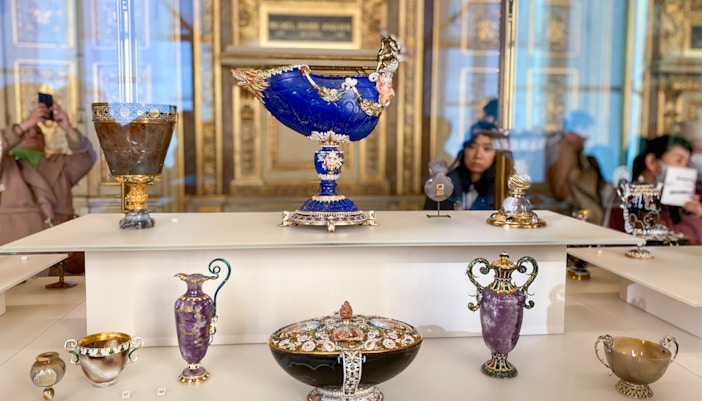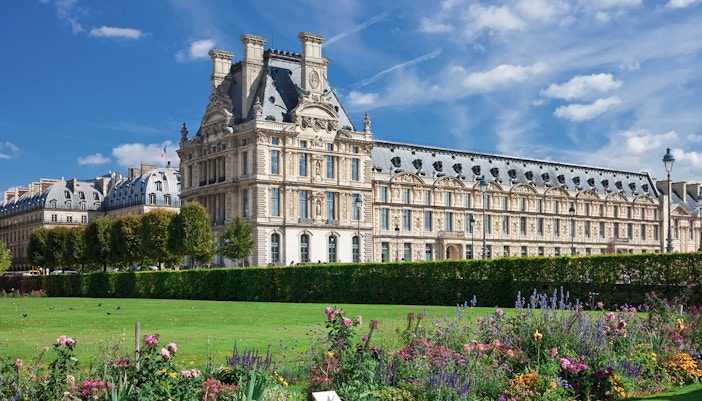- Louvre Museum
- Tuileries Gardens
- Eugène-Delacroix
- History
- Inside
- Collections
- Mona Lisa
- Louvre Pyramid
- Liberty Leading the People
- Artworks
- Winged Victory
- Venus de Milo
- Louvre at Night
- Disneyland® Paris Tickets
- Eiffel Tower Tickets
- Paris Catacombs Tour & Tickets
- Versailles Tickets
- Notre-Dame Paris Tickets
- Orsay Museum Tickets
- Paris Pantheon Tickets
- Arc De Triomphe Tickets
- Opera Garnier Paris Tickets
- Big Bus Paris Hop-on Hop-off Tours
- Parc Astérix Paris Tickets
- Sainte Chapelle Tickets
- Les Invalides Tickets
- Eurail Passes
- Musee de l'Orangerie Tickets
Discover the Iconic Louvre IM Pei Pyramid
Why was the Louvre Pyramid Built?

In 1981, French President Francois Mitterrand initiated a decade-long project: The Grand Louvre. The project was motivated by the fact that over the years as the museum's collection grew, and the management shifted to curatorial practices, the Louvre became short on space. Over the years, the Louvre was forced to release some of its holdings to other museums in Paris, including Musée d'Orsay. However, this did not do much in terms of easing the pressure on the museum's space and did not allow room to add any modern facilities such as restaurants, or washrooms. Additionally, the exteriors of the museum needed to be remodeled as well.
The Grand Louvre project involved removing the French Finance Ministry that was being housed in the northern wing of the museum from the building. This would allow room for expanding and renovating the Louvre. The pyramid, designed by I.M. Pei was designed to be the centerpiece of the project.
Design of the Glass Pyramid at Louvre
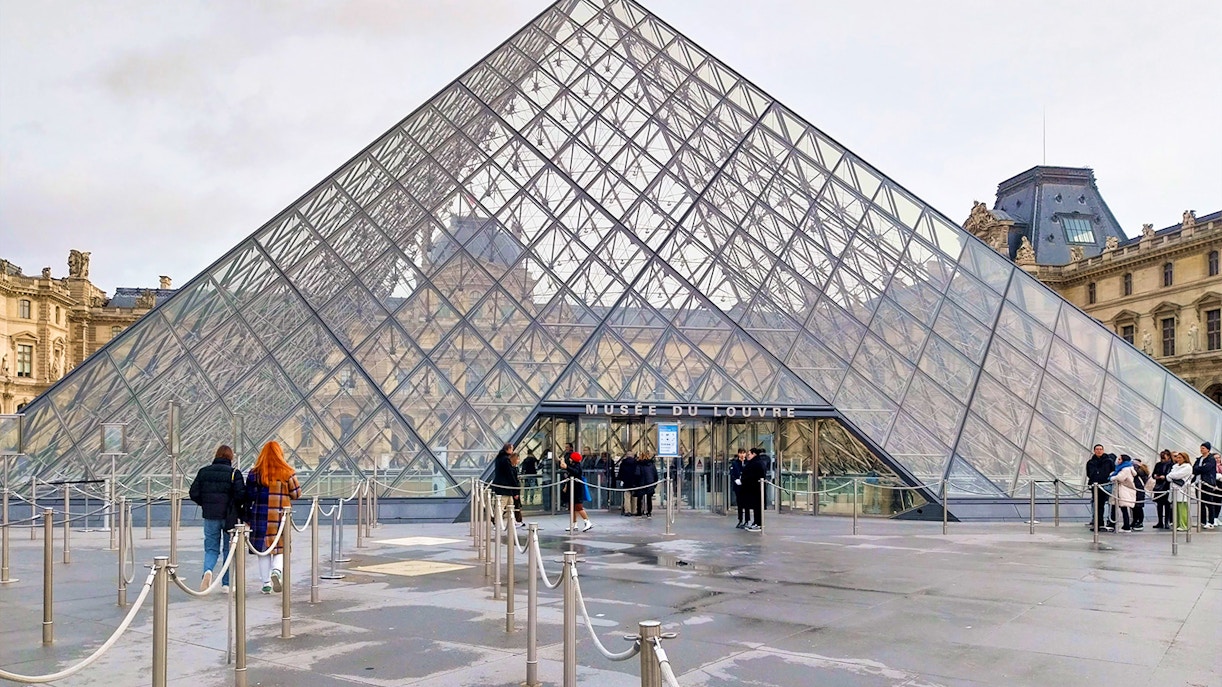
I. M. Pei designed the pyramid in a way where the visitors would enter the pyramid and descend into the spacious lobby and then make their way into the main Louvre buildings.
Records state that the main pyramid consists of 603 rhombus-shaped glass segments and 70 triangular glass segments and metal poles integrating 95 tons of steel and 105 tons of aluminum. You will find 171 panes on three sides and 160 panes on the fourth side, which has the entrance to the pyramid. The pyramid is about 21.6 meters tall covering a base surface area of 1,000 square meters.
The glass pyramid, inspired by the Pyramid of Giza, was designed to provide a contemporary spin to the surroundings while acting as a central focal point. However, the modern structure is not supposed to take away from the traditional nature of the museum but rather complement it.
Interesting Louvre Pyramid Facts
Here are our top facts about the Pyramid that you need to know before visiting the museum:
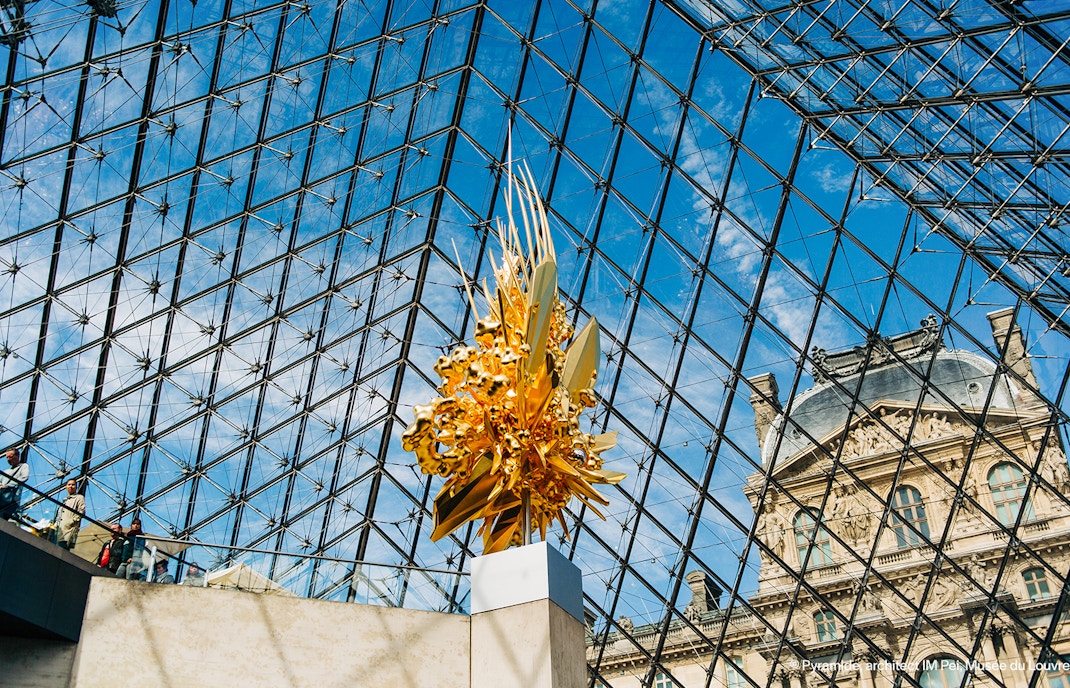
The Glass was Built from Scratch
It was I.M. Pei’s vision to have total transparency in the pyramid glass. Considering the faint bluish or greenish tint that glass holds, the mission to create a crystal clear glass was a big challenge. After months of exhaustive research and planning, his dream became a reality with the help of Saint Gobain, who produced a new glass from scratch specifically for this project. Within two years, the team together developed this 21.5-millimeter extra-clear laminated glass. Although no changes have been made in the last 30 years, Saint-Gobin had created enough glass to build two additional pyramids just in case any glass piece ever fell apart.

Cleaning the Pyamid is No Joke
Imagine cleaning windows with a 71-foot sloped structure! Earlier, the museum hired mountaineers to scale the Pyramid and clean the glass. But, this solution could not be used long-term. In the 1990s, they began using a crane that would be driven up to the Louvre to hand a cleaning machine. In 2002, Advanced Robotic Vehicles, a Seattle-based company, created another robot that could be controlled using a remote. The robot, dubbed LL1, climbs the Pyramid is secured to the glass using suction cups, and climbs to the top on tracks. It features a squeegee and rotating brush that is used to clean the glass. However, for some tasks, such as descaling the glass, they still rely on ropers.

The I. M. Pei Pyramid is not the Only Louvre Entrance
Though the Louvre museum shot to fame with the Pyramid entrance, it is not the only way to access the museum. Sometimes, it might be ideal to choose other routes to avoid the massive crowd as well. Visitors with single or group tickets can enter from Passage Richelieu. You can also make your way in from the Carrousel du Louvre, which is the underground shopping and dining area that opened in 1993. From here, you gain direct access to the museum and can witness the inverted pyramid, also designed by I.M. Pei.
Louvre Museum Entrances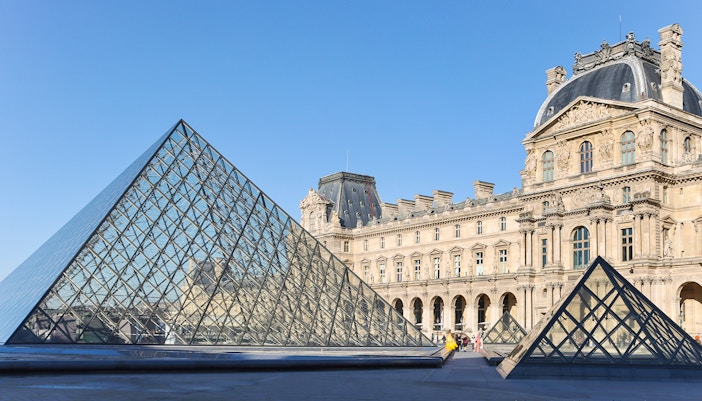
The Pyramid Is Is Not Big Enough
The Pyramid was built with the intention of expanding its spacing to welcome more visitors. I. M. Pei did make this possible by increasing the area to double by adding 650,000 square feet of space underground. In 1989, the Louvre was able to welcome 3.5 million visitors, as result. However, by 2018, the venue had become too small as the number of tourists increased to 10.2 million, which meant an average of over 25,000 visitors daily.
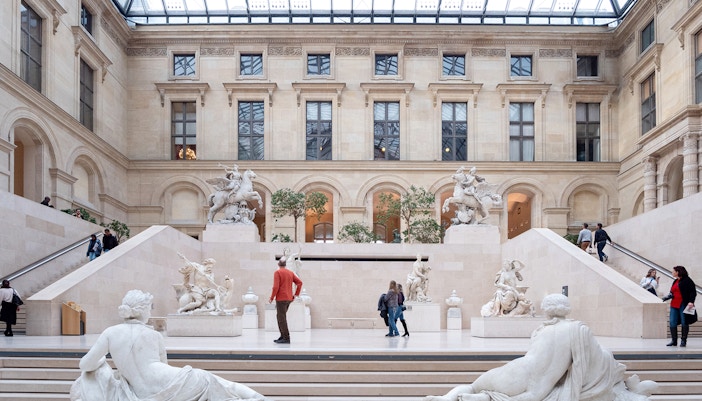
The Louvre Actually Has Five Pyramids
The I.M Pei Pyramid is the primary entrance to the Louvre, located in its courtyard. The structure serves as a constant reminder of the Egyptian Antiquities collections and their significance within the museum. The main Pyramid is accompanied by the three small ones which are placed to create light shafts for the museum’s collections.
The fifth and final one is the inverted pyramid which can be viewed when using the Carrousel du Louvre entrance underground. This, too, was designed by I. M. Pei and was completed in 1993.
Book Tickets to the Louvre Museum
Frequently Asked Questions About the Louvre Pyramid
A. Since the Louvre Pyramid, or the I.M. Pei Pyramid is the main entrance to the Louvre, you would need tickets to enter.
The I.M. Pei glass pyramid is located in the main courtyard (Cour Napoléon) of the Louvre Museum in Paris.
I.M. Pei, the architect of the Louvre Pyramid came up with the design in late 1983 and the construction was completed in late 1987. The pyramid was inaugurated on 29 March 1989 and opened to the public on April 1, 1989.
The Louvre Pyramid was desigend by Chinese-American architect, I.M.Pei.
With Louvre's collection growing exponentially the museum was running short on space. The building was not equipped with modern facilities and was unable to accommodate its increasing number of visitors. The pyramid and the underground lobby was designed to help expand the museum's surface area and allow room to add the necessary facilities and create enough space for more visitors.
The Louvre pyramid is made of 673 glass segments and metal poles that integrate 95 tons of steel and 105 tons of aluminum.
The Louvre Pyramid is made of 603 rhombus-shaped glass panes and 70 triangular glass panes, totalling to 673 glass panes.
You will find 171 panes on three sides and 160 panes on the fourth side where you will find the entrance into the Pyramid.
The Louvre Pyramid is about 21.6 meters, i.e, 70 feet tall.
The Louvre Pyramid functions as the main entrance to the museum. Underneath the Pyramid you will find restaurants, lockers, toilets and information desks.
Yes, the Louvre Museum as a whole is disabled-friendly. There are tube lifts for disabled visitors to use that will allow them to descend to the lobby underneath. Wheelchairs are made available at the museum for guests to borrow during their visit.
No, the Louvre has four entrances. While the Pyramid is the main entrance, if you wish to avoid the massive crowd you can enter from Passage Richelieu or from the Carrousel du Louvre entrances. The fourth entrance, Porte des Lions, has been closed temporarily since 2019.

